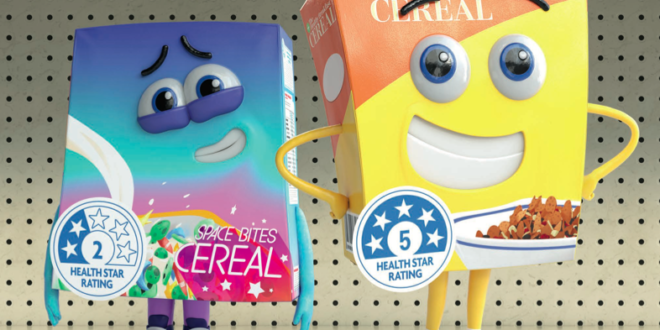The Australian system and New Zealand’s nutrition labels with stars, which has a score of 0.5 to five, is working, because since it was introduced on a voluntary basis in 2014, it has prompted some companies – those that sold the worst products – to improve recipes. However, it could work much more if it were made mandatory.
This is the conclusion a study that analyzed the composition trend of almost 59,000 foods of 14 types, sold in four of the main New Zealand supermarket chains and in the Australian Aldi, Coles, IGA and Woolworths stores between 2013 and 2019. results were published on PLoS Medicine by researchers ofUniversity of Melbourne, Auckland and the George Institute for Global Health.

In fact, it was seen that the companies that decided to put the stars on the front of the packages had a higher probability of improving the composition of the food up to earn at least 0.5 points, equal to 6.5% for Australian companies and 10.7% for those New Zealand involved. In this country, then, the quantity of salt fell by 4% in “starred” products, and in Australia by 1.4%, while that of sugar fell by 2.3% and 1% respectively. 1%, always in the marked products.
An important fact it was that related to the type of foods that benefited most, because they were the poorest ones. In Australia, products that scored between 0.5 and 1.5 lost on average 14 kJ of energy per 100 grams (1.3% of the total), while those that had 4- 5 stars remained unchanged, and the same occurred in New Zealand. The protein content also remained substantially stable.

It was then seen that over 35% of 4 or 5 star products have the nutrition label on the package in both countries, while only 15% of foods and drinks with fewer stars (two) use it in both countries.
To explain even better what all this means, the authors cited three examples: a very popular type of cracker today has 6% fat and 10% less sodium than when the stars were introduced in 2016, and for this, in the meantime, it has earned half a star. The same, especially with regard to sodium, has happened to many ready-made soups, which thanks to the decrease in salt have gone from 3 to 3.5 stars, while a famous brand of barbecue sauce in 2017 inserted the stars and, at the same time, announced a sugar reduction of 4.5 grams per 100, equivalent to a cut of 9.6%.
The effects seen are small in size, and the type of analysis done does not say whether the best foods were actually purchased more or less, but – the authors underlined – if compared to the population and, above all, to the excess of nutrients and calories that every inhabitant assumes every day, could have significant consequences. Which, of course, could be of a very different entity if nutritional assessment were mandatory for everyone. At the moment, however, the regulations do not even provide great incentives for companies that decide to indicate the stars.
© All rights reserved


